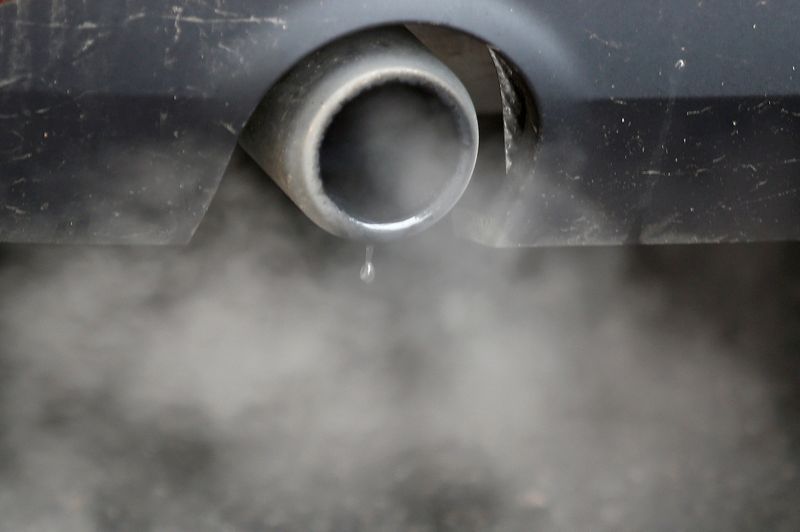By Barbara Lewis and Nick Carey
LONDON (Reuters) - A regulatory gap allows automakers like Ford and BMW to make U.S. cars that emit more ultrafine particles that harm human health than equivalent models sold in Europe and other markets, according to new research.
British testing specialist Emissions Analytics took four pairs of cars - from Ford, BMW, Toyota and Stellantis - and compared the impact of tailpipe filters that are widely used in Europe where regulations limit the number of harmful particles that can be emitted, but not in the United States where the same regulations do not apply.
China and India use similar standards to Europe.
According to industry estimates, a gasoline particulate filter costs carmakers around $200.
Emissions Analytics estimated around 300 million gasoline-powered internal combustion engine (ICE (NYSE:ICE)) vehicles travelling 10,000 miles annually on U.S. roads for the next decade will unnecessarily emit 1.6 septillion (1,600,000,000,000,000,000,000,000) harmful particles.
"Few things in emissions control are a no-brainer," said Emissions Analytics CEO Nick Molden. "In this case, the benefits appear high, costs relatively low, and risk minimal."
The research found in a cold start in an urban area, the average European model emitted 83.7% fewer particles than its U.S. counterpart.
Emissions Analytics said the biggest difference was in the Ford Kuga, which consistently emitted 95% fewer harmful particles than its U.S. sibling the Ford Escape, and 96% in a warm highway start.
The research also found major differences for the BMW X5, Stellantis's Jeep Wrangler, and the Toyota RAV4.
Ford, BMW, Stellantis and Toyota said they build their vehicles to meet all local regulations and emphasised they will each spend tens of billions of dollars to switch to zero-emission electric vehicles.
"Each and every BMW vehicle sold in the U.S. either meets or exceeds the U.S. requirements for vehicles in this market," BMW said in an email.
The filters are used on both diesel and gasoline vehicles across markets and are fitted on U.S. diesel vehicles, which usually produce bigger, heavier particles.
But the gasoline vehicles Emissions Analytics tested in the United States have been assumed to meet standards set by U.S. regulator the Environmental Protection Agency (EPA) without requiring a filter.
Since the U.S. regulation was introduced in 2014, direct injection fuel technology, which improves fuel efficiency, has increased the amount of particulate matter gasoline cars emit, industry experts say.
Ultrafine particles are harmful because their microscopic size means they can be drawn deep into human lungs.
Even under the most aggressive U.S. scenarios for phasing out ICEs, they will likely be sold into the 2030s.
"There is a strong argument we should do what we can to make ICE vehicles as clean as possible, whatever the speed of electrification," Molden said.
Allen Schaeffer, executive director at the Diesel Technology Forum, estimated gasoline direct injection vehicles accounted for about half of North American vehicle sales.

In emailed comments, the EPA said carmakers had met its standards without needing filters, but it is looking at filters and other technologies for new rules from 2027.
"We hope to continue to incentivise stricter emissions standards for vehicles going forward," the agency said.